Lek's Dance
- Mike Timmons
- Apr 15, 2023
- 8 min read
4/16/2023
I got to spend 4 days in the Hays, Kansas area recently. That, to be honest, is not all that great of a thing. The most exciting experience in Hays was when a tumbleweed blew past the car in the middle of town. I was not there to see tumbleweeds. I was there to see prairie chickens; the maniacs of the open range. I had to fly into Hays on Friday (car rental was not open on the weekend) and that gave me two days in the area before I would be visiting the leks. I had high hopes of getting in some astrophotography those first two nights, but the weather had other plans. Instead, I spent some time hanging out with Jamie, from Sabrewing, and even went to trivia night, where my team placed one point behind third place. Next time I guess I should do the Chicken Dance for the extra points. Anyway, onto the birding!
There is not much to show from the first two days. I spent both mornings at Quivira NWR. It is about two hours from Hays. I have never been, but it was a great place to visit. The timing worked out just right, and there were hundreds of rosy-colored Franklin's Gulls flying around. The only thing outnumbering them was the hundreds of American Avocet. If it was not for the overcast skies, on-and-off rain, and 20-30 mph wind gusts, it would have been an awesome morning. Aside from the gulls and avocets, we had a good number of duck species, a lot of Black-necked Stilt, a "Krider's" Red-tailed Hawk, a raft of American White Pelican, Snowy Plover, and 5 unbanded Whooping Cranes. Afterwards, we drove down to Witchita to pick up Brian and managed to spot a Scissor-tailed Flycatcher along the way.
I headed back on the second morning to find a little warmer temps, the same windy conditions, and some sunshine. The sunshine allowed me to get some shooting in. Things had moved around a bit from the previous day, but I still found some cooperative birds.
I got a single shot of a Franklin's Gull. They were all huddled on the far side of the water and were not flying much while I was there. The early morning sunshine overpowered a lot of the pink, but you can still see how pink they were.

On the way out, I was thinking about how I had not seen any Snowy Plover that day. As I pulled onto the road to start the trek back to Hays, a small white bird ran across the road. A Snowy Plover was picking bugs out of the road. I drove to get ahead of him, and he ran behind the car and headed the other way. I turned around and got ahead of him again. He turned around and ran the other way.... I gave up and called it a morning. At least I got a few shots. This bird is part of an inland population that is separate from the two coastal populations. They are quite dark, like the California birds.
I had seen where Harris's Sparrow was still being seen in the state and was hoping to track one down. I headed over to Cedar Bluffs to look around where some had been reported. The winds were still bustling, though, and that is just not the best conditions to look for a sparrow in. I settled for a shot of a foraging Western Meadowlark and a Vesper Sparrow.
Early bedtime the second night. I had to report to the meeting spot at 3:30 AM.
Before we dive into pictures, a few things about this experience. There are two species of prairie chicken: Greater and Lesser.

I would be seeing both on this trip, and I was going to view them at a lek. If I recall my trivia correctly, lek is from Swedish. Google gives a set of meaning ranging from "dance" to "play" to "spawning", which is not too far off from what happens there. During mating season, the males come and strut around while the females meander around and pretend to ignore them. It is pretty much a scene that plays out at bars around the world on a nightly basis. The area where this performance happens is called a lek, and it has some magical boundary to it that only the chickens can see. It pretty much looks like the rest of the area.

As for the area, it takes 50,000 acres to support a prairie chicken population. Most of this is fenced cattle ranch land. The pictures will attest to that. Lesser Prairie Chicken exhibit a perching behavior, and there is really only one thing to stand on top of out on the range.
The center of the lek is held by the strongest male. Further to the edges are less dominant and young males. Females have access to the entire lek but usually stick to the outer edges. To stir things up, one or two will casually walk though the middle of the lek, on occasion. What does a stirred up lek look like? A slightly crazier version of what is already a frantic display of activities. Prairie chickens give a number of clucks, calls, and cackles; the latter is quite loud. They also do a short display(? maybe not the right word for it) flight that consists of a small hop and a few flaps over a short distance. Most notably, the chickens dance, and they boom. Dancing is more of a stomping of the ground. At times, there is a constant staccato rythym of the pattering of feet against the ground. Seems incredible that you can hear it. Here, you can see the feet as a Lesser Prairie Chicken is dancing.

This is usually accompanied by a bowing of the head and the inflating of two air sacs on each side of the neck. These are inflated and deflated to produce sounds, "booming". In the case of the Lesser, it is a quicker plopping type sound. Greater produces a bit more of a bass wobble, in comparison. Here is a "perched" Lesser Prairie Chicken with its air sacs inflated.

Between the birds calling, dancing, and booming, it can be quite the cacophony. Somehow this all plays into determining dominance on the lek. Of course, there are often differences of opinions. This leads to fights - sometimes. Being at the center means you are going to be challenged a lot. Sometimes it is the bird in the middle that starts the challenge and sometimes it is a contender from the edges. A lot of times, this ends in a bluff or one of the birds huddling low against the ground.

A few feints or wing flares or even just mild glaring is what the usual confrontation consists of. Then both parties return to their normal spots and carry on with whatever they were doing. Sometimes, it comes to blows. This is jump-kicks, pecking, and feather-pulling ninja-like acrobatics at its best. I have a couple series to share below.
All of this is done to win the hearts (or at least the momentary attention) of the females. For their part, they act like they could care less. They are the reason everyone is here, though. Here are a female Lesser (L) and Greater (R). Both are very similar. Lesser has less heavy barring, are smaller, and has shorter pinnae (the long feathers that drape around their neck).

Once a male has assured himself that he is the most dominant on the lek, he performs what is called a "nuptial bow". He basically lowers himself to the ground before a female.

The hope is that she will agree that he is the best bird out there and mating will follow. In this instance, the female walked by without a second glance. For his part, he stood up, shook it off, and went right back into a fevered dance. I saw two attempts at copulation on the second day. Both were interrupted. In the first instance, another female ran over and pushed the male off his mate. In the second, another male came running across the lek and jumped on the male's back and attacked him. All is fair in love and war.
A couple more things, and then a mass of pictures for you to enjoy. First, the chickens were not the only visitors to the lek. We had Western Meadolark, Horned Lark, Vesper Sparrow, and Mourning Dove on the lek at times. The most impressive visitors stopped by on the first morning. Right as gloaming was setting in, a pair of Pronghorn come out of nowhere and walking directly at us. They were quite alert to us and did not stick around long, but it was a beautiful sight in really beautiful lighting.
The second thing is about the lighting, itself. The quality of light varies significantly between photos. As I mentioned earlier, we started our day around 3:30 AM; a little later the second day. This allowed us time to drive to the lek and get blinds setup an hour before sunrise. We needed to be in place and quiet by then to ensure the birds were not disturbed. The action on the lek starts at the first glimpse of light. Not sunrise, but morning twilight. There is not enough light to shoot at this point; so, you are just an observer. Eventually, you get enough to get by on. The shots are high ISO and low shutter. They are passable, but you are shooting, at least. This passes into gloaming. Gloaming is the moments before sunrise. The sun is just peaking above the horizon, and everything blazes into blues, oranges, and magentas. You can see that in the photos above. I only every really experience this in flat open places. Once the sun fully peaks above the horizon, you get a lot more oranges and yellows. About an hour after sunrise, it is full-on normal, directional sunshine. We were there for the full progression. We had to stay until the last chicken left. Things would start to wind down. A lot of "fights" were just birds facing each other and falling asleep.

Finally, there is a bit of activity and then everyone flies off. Well, most everyone. There was always one or two that missed last-call and are stumbling around the dance floor wondering what happened. They eventually left, too. All of this to say, as you look at the photos, the light quality and tint will vary greatly from pic-to-pic. It just depends on what time it was taken.
About those fight sequences. I have a couple to share. The rest will just be mixed into the batch of photos below. On the second day, there was a Lesser and Greater that appeared to be bitter enemies. They squared off constantly. While you would assume this was an easy match for the Greater to dominate, the Lesser never backed down. Here, the Lesser definitely came out on top.

A little bit later, the Greater got his revenge. He even took a few feathers as a trophy.

There are many more antics in the photos to follow; along with some display flights, dancing, cackling, and just plain posturing. I hope you enjoy them as much as I enjoyed taking them. These birds have a lot of character. The pictures loaded in reverse order. So, if you start at the bottom and scroll up, you can watch the progression of pre-dawn to end-of-morning both days.
With the parting of the last chicken on Tuesday, I had to race back to the hotel to cleanup and head home. My flight left that afternoon. I managed to get to the airport a couple hours early, which was way too much time there. As for the birding, it was an amazing experience. I look forward to doing it again some day. Maybe just not in Kansas.
Thanks for reading,
Mike





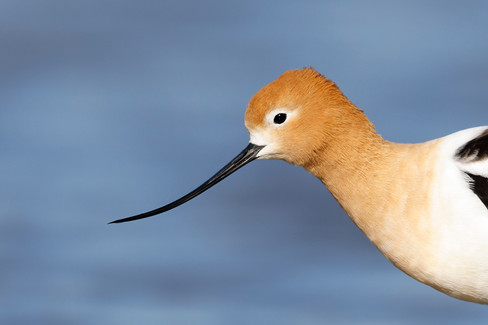











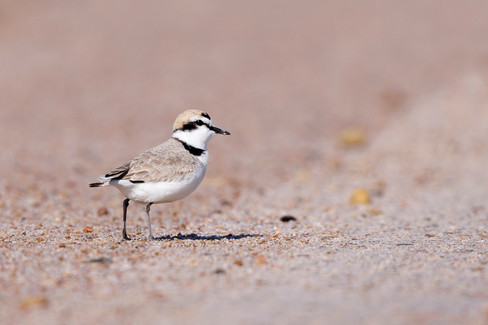







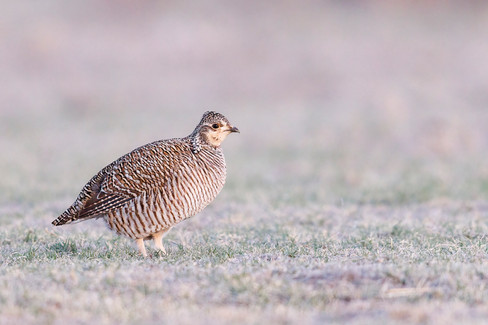





































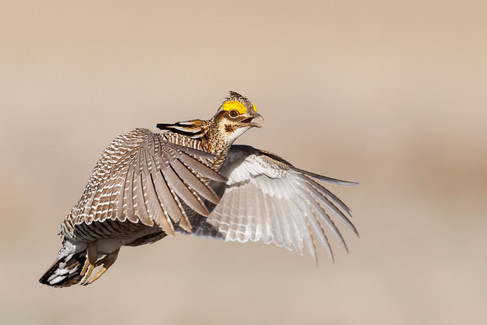



































































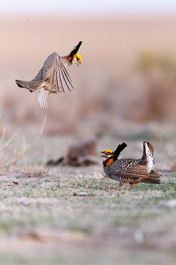



































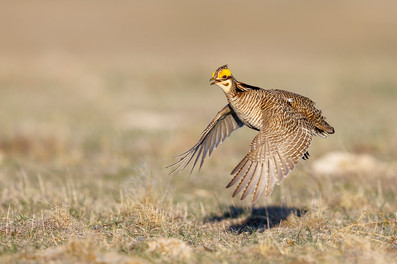





























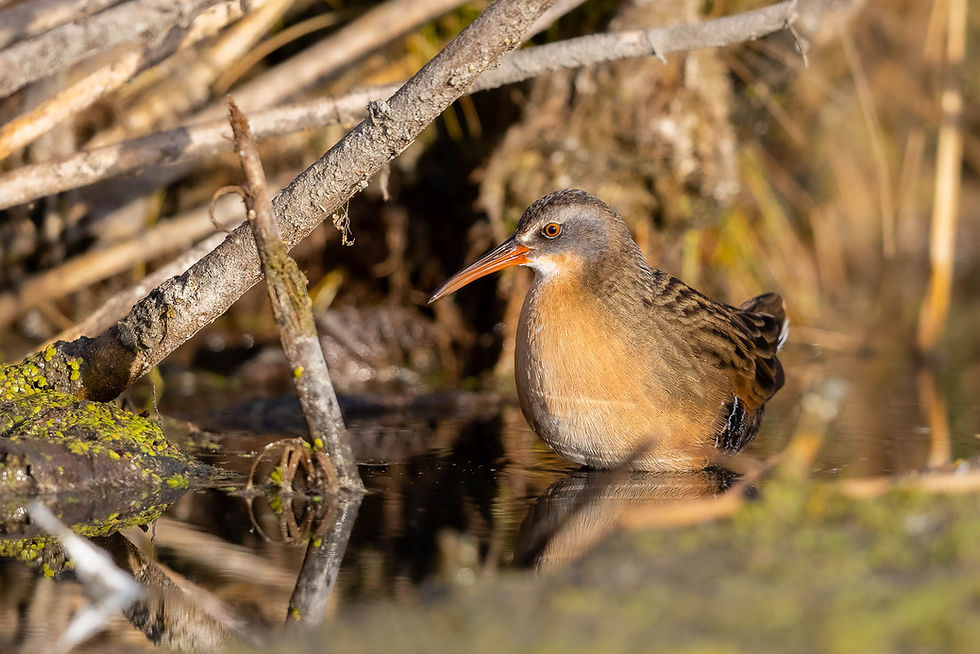

Remarkable photos and story on the prairie chickens. Spent some army time at Ft. Riley and traveled a bit around the area. It has its own special charm.
Always so beautifully written. Stunning photo gallery. Aren’t Prairie chickens threatened these days? Such a special species. Thank you for sharing. Lindsey.
I really enjoyed this story. It is very well written. I felt like I was reading an article in a national wildlife or nature magazine and the photos are excellent as well. Really well done Mike.